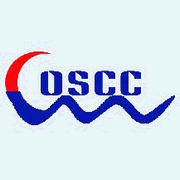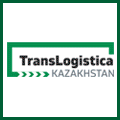THE National Chambers of Commerce and Industry of Malaysia (NCCIM) is organising a trade mission to Chennai, India and Colombo, Sri Lanka from May 6 to 11.
This mission will be led by Tuan Syed Ali Mohamed Alattas, the president of NCCIM.
The objectives of the mission are: to explore business potentials in India and Sri Lanka; to obtain first-hand information on the practical aspects of doing business in these countries; to promote Malaysian products and services; and to promote joint ventures with local businessmen.
"Both India and Sri Lanka are developing at a rapid phase and thus offer ample opportunities for Malaysian companies in the field of export of merchandise and services, and also investment," a statement from NCCIM said.
Shipping Gazette - Daily Shipping News
SWISS forwarding giant Panalpina has admitted that the sector has earned its reputation for anti-competitive behaviour, but argues that the image is outdated, according to London's Financial Times.
The company, together with 13 others were recently fined EUR169 million (US$225 million) by the European Commission for participation in cartels in international air freight forwarding services.
Panalpina was fined EUR46.5 million, while Kuehne & Nagel, also based in Switzerland, was told to pay EUR53.7 million. Deutsche Bahn and subsidiary Schenker were fined 34.9 million. The various companies operated one of the international cartels based on meetings at an unpretentious Italian restaurant near London and used code words like "fresh marrow" and "asparagus" to disguise illegal surcharges.
In an interview, Panalpina's chief executive, Monika Ribar, admitted that her company and its peers had a record of cartels and other anti-competitive practices. "It is true our industry has gained a poor record, based on problems in the past. But companies have learned to deal much more seriously with the situation in recent years."
Mrs Ribar argued change had been triggered by much tougher laws in Europe and the US, and a greater emphasis on ethics among freight companies.
She pointed out that the latest EU fines reflected past problems that had taken years to investigate fully. "The EU Commission has taken five years to get somewhere. The whole story happened between 2000 and 2005. Our company has changed dramatically in the meantime."
Panalpina, which ranks itself fourth behind DHL, Kuehne & Nagel and Schenker, has had various brushes with regulators. In addition to the latest European crackdown, the group has previously paid almost $82 million in a deferred prosecution agreement under the US Foreign Corrupt Practices Act, after probes into its Nigerian activities prompted it to pull out of the country.
Panalpina has also lost business from government departments and big companies whose policies forbid them from trading with partners sanctioned for anti-competitive or corrupt practices.
"Now as a chief executive in freight you deal more and more with lawyers than with your core business", said Mrs Ribar. Among the changes she has instituted in the company include elevating compliance, with the appointment of a chief compliance officer reporting directly to the CEO, creating much bigger local compliance teams and increasing focus on corporate ethics.
"Companies have learned to deal much more sensibly with the situation," Mrs Ribar said. "At Panalpina, we haven't left a single stone unturned in re-examining the way we do business."
Shipping Gazette - Daily Shipping News
A SERIES of "catastrophic claims' has resulted in a plunge in profits at London transport insurer TT Club, according to its CEO Charles Fenton.
TT Club was much exposed to earthquake in Christchurch, New Zealand, the earthquake/tsunami in Japan, flooding in Thailand as well as facing substantial losses arising from the grounding of the 3,370-TEU Rena off New Zealand in October.
TT Club does 32 per cent of its business with ports and terminals, 23 per cent with ocean carriers and related service providers, containers and chassis equipment as well as 19 per cent with logistics operators.
These claims offset the TT Club's 8.5 per cent increase in premiums to US$181.7 million, compared with $167.4 million in 2010, and led to net profit falling 90 per cent to $1.2 million.
But Mr Fenton said the TT Club's combined ratio of 98.6 per cent remained under 100 per cent, thus payments and expenses were more than offset by income, reported London's Containerisation International.
Said TT Club chairman Knud Pontoppidan: "This is a very important and healthy position to be in, given market conditions as they are."
Mr Pontoppidan also took comfort in the TT Club's record $145.4 million reserves, its good underwriting results and stable financial position.
Shipping Gazette - Daily Shipping News
GLOBE Express Services, of Charlotte, North Carolina, a major logistics provider, has finalised the acquisition of Rome-based International Transport Services Associated (ITSA), according to a GES statement.
ITSA ranks fourth in Italy in terms of volume on forwarding volume in the Asia-Italy trade, operating from Milan, Venice, Taranto, Pomezia, Civitavecchia and Bari, as well as its own warehouses in Rome and Milan.
With the deal, GES increases its global network to 56 corporate offices worldwide, reflecting the company's commitment to working with the right people in the right places to support its growth plans.
In 2011, Italy boasted the world's eleventh largest economy in terms of purchasing power, with an estimated GDP of US$1.82 trillion. The national economy is driven in large part by the manufacture and export of high-quality consumer goods, including textiles, apparel, footwear, motor vehicles, food and beverages.
But despite weakness of the Italian import market brought about by the European debt crisis, ITSA has managed to maintain its position and market share Italy-Asia Pacific trade, said the GES statement.
Said GES chairman Gilbert Khoury: "This acquisition not only expands our office network in Europe, but extends to the Italian market key service segments (air freight, warehousing, consolidation services) already provided by GES France and GES Switzerland. In addition, we are strengthening our global footprint and product offering in relation to the fashion and apparel industry."
Said ITSA president Vincenzo Cuffaro: "We strongly believe that this will benefit both GES and ITSA. From ITSA's point of view, we will gain access to new markets and increase our export business, which are two of our main strategic objectives. We will also gain a broader corporate vision and access to a more complete support network, which will help expand and further improve our business model."
"This joint venture comes as part of GES' long-term growth strategy and constant commitment in striving to provide comprehensive solutions to customers worldwide. With the JV, distinct capabilities have been combined to positively enhance customer service and logistics efficiencies," said the GES statement.
Shipping Gazette - Daily Shipping News
HONG KONG's Cathay Pacific Airways is to become first airline to offer an air cargo service linking India's fourth most populous city with east and north Asia by increasing its presence in the subcontinent with a new twice-weekly freighter service to Hyderabad.
The Hong Kong-based airline also announced that a third weekly freighter flight to Bengaluru will be added to meet high demand to and from India's leading information technology hub. Both services will start from May 17.
The launch of the new Hyderabad service and the added frequency to Bengaluru will give shippers more choice and flexibility for connecting to the airline's international cargo network through the Hong Kong hub.
"India is an increasingly important market for our business" said Cathay cargo chief Nick Rhodes. "Hyderabad is one of the major hubs for the manufacturing of pharmaceuticals in India, accounting for around one-third of the country's drug production, so we expect a strong demand for our specialised Pharma LIFT products and services.
"For Bengaluru, we have been seeing increasing demand since we launched our freighter service last August and we believe the time is right for an additional flight each week."
The Hyderabad service will operate on a Hong Kong, Delhi, Bengaluru, Hyderabad, Hong Kong routing on Thursdays and a Hong Kong, Chennai, Hyderabad, Hong Kong routing on Sundays.
"The launch of these new flights will reinforce Cathay Pacific's position as one of the biggest air freight operators in India. The latest schedule enhancements mean that Cathay Pacific will operate 19 cargo flights a week to five major commercial cities: Delhi, Mumbai, Chennai, Bengaluru and Hyderabad," said Mr Rhodes.
Shipping Gazette - Daily Shipping News
NEW YORK listed China Eastern Airlines sank to six-month low in US trading after China's central bank doubled the daily trading band to one per cent on April 14, Bloomberg reported.
Shares of China Southern Airlines, the nation's largest carrier, also dropped upon the news. American depositary receipts of China Eastern plunged 3.6 per cent to US$15 earlier this week, the lowest close since Oct 7, 2011 while Hong Kong shares dropped 4.9 per cent to US$0.30.
"Chinese airlines may be impacted by the currency policy change should the yuan react with depreciation," said Alex Ashby, a New York analyst at Global X Funds. Both China Eastern and China Southern forecast falls of over 50 per cent in net income in the first quarter 2012 due to smaller foreign-exchange gains, higher fuel prices and weaker economic growth.
Shipping Gazette - Daily Shipping News
AUSTRALIAN flag carrier Qantas has announced that it will conduct a feasibility study, starting from May, into the potential for an Australian sustainable aviation fuel industry, backed by government funding.
The announcement comes as the carrier embarked on the nation's first flight powered by sustainable aviation fuel from Sydney to Adelaide using a fuel type derived from recycled cooking oil.
Supplied by SkyNRG, the fuel type is a 50:50 blend of biofuel and conventional jet fuel certified for use in commercial aviation. Its life cycle carbon footprint is around 60 per cent smaller than that of conventional jet fuel, a statement from the carrier said.
Qantas CEO Alan Joyce said the project would explore the conditions needed for the production of aviation biofuel from sustainable sources within Australia.
"Today is a historic occasion in Australian aviation," Mr Joyce said. "Alternatives to conventional jet fuel are vital to the aviation industry meeting ambitious targets for carbon-neutral growth and emissions reduction.
"Australia has the skills, resources and infrastructure to take a lead in this emerging sector, which the CSIRO (Commonwealth Scientific and Industrial Research Organisation) has estimated could generate up to 12,000 jobs over the next 20 years. But there are also significant challenges, which is why we need to establish a clear plan.
"Until sustainable aviation fuel is produced commercially at a price competitive with conventional jet fuel, we will not be able to realise its true benefits. This study aims to tell us how that can be achieved in Australia," said Mr Joyce.
On April 19, the group's subsidiary airline Jetstar will power flights JQ705 and JQ706 from Melbourne to Hobart and back with the same fuel type used in the Qantas flights, which the group said underlines its commitment to sustainable aviation fuel.
Government funding for the study will be allocated under the Emerging Renewables Programme, while Shell will provide technical support.
Shipping Gazette - Daily Shipping News
THAI Airways International has appointed Air India SATS Airport Services (AISATS) to provide ground handling for its freighters at Hyderabad International Airport.
Effective from April 12, AISATS will manage the entire ramp operations for the airline's freighter aircraft at Hyderabad, reports India's Economic Times.
Thai Airways first Boeing 747-400, retrofitted as 100-tonne capacity long-haul freighter, now serving Taipei, Tokyo, Hyderabad, Chennai, Delhi, Frankfurt, Amsterdam, Sydney and Bangkok.
"We are proud that they have selected AISATS as their partner for ground handling at the Hyderabad. We look forward to partnering with Thai Air as an extension to our successful partnership for the handling of their passenger flights," said AISATS chief executive Willy Ko.
AISATS is a joint venture between Air India and SATS of Singapore. It began offering ground-handling services at Hyderabad in March 2008, serving Air India and other international airlines. With a staff of 900, the joint venture has in the past year handled over 9,000 flights out of Hyderabad.
Shipping Gazette - Daily Shipping News
THE Woodland Group has become the first UK freight forwarder to purchase and install a Westminster dual view cargo and pallet X-ray scanner, a state-of-the-art machine more commonly seen in the United States.
The company's first WG IS1517 cargo and pallet X-ray scanner is already operational at Woodland's air cargo centre at Heathrow airport. The company said it's so impressed with the unit that it is now considering a second machine for the group's warehouse in New York.
"We believe that logistics providers will come under increasing pressure to ensure cargo is scanned from multiple angles and so we are delighted to be leading the way with the latest technology," said Andy Dennis, Woodland's head of air.
"This purchase represents a substantial investment and highlights the importance that Woodland place on securing the global supply chain."
The WG IS1517, which is 7.9 metres in length and stands 2.9 metres high, is used to inspect cargo, pallets and large parcels and can accommodate a maximum load of 2,000 kilogrammes.
Peter Fowler, the chief executive officer of Westminster Group PLC, which supplied the machine, said: "Woodland is the first UK freight forwarder to install Westminster's high performance, dual-view scanners which will not only increase efficiency but also give piece of mind that cargo has been properly screened."
Shipping Gazette - Daily Shipping News
2012-04-18
Softlink’s Logi-Sys Enables Delight Logistics’ to Augment its Operational Capability and Service-Level for More Efficient, Cost-Effective Customer Service
Softlink today announced that a leading logistics company, Delight Logistics Pvt. Ltd. is using its enterprise logistics management software Logi-Sys to augment its operational capabilities and service level. Delight logistics deployed the integrated software to improve the efficiency and cost-effectiveness of its logistics operations and enhance service levels
Delight is a leading Logistics company that employs innovative processes & methods with emphasis on excellence and professionalism. The company possesses expertise in Forwarding and Custom Clearing Services, Multi modal transportation & distribution, and Warehousing. Delight is dedicated to making logistics easier for its customers, and as such has placed an emphasis on prioritizing service delivery and the customer experience. Delight started using Logi-Sys since December 2011.
Mr. Vijayan Nambiar, Director, Delight Logistics Pvt. Ltd. says, “Logi-Sys has enabled us to fulfill our commitment to provide the highest standards of customer service and optimized performance across our operations. The advanced monitoring tools, in-built alerts and notifications system of Logi-Sys has enabled us to manage our business efficiently and adhere to timelines at all times.
“Logi-Sys is well-suited for helping logistics companies like ours improve performance and efficiency in a challenging market and I am confident that it will help us in achieving our goals. Using Logi-Sys we are benefiting from its advanced features superb reporting systems that helps us execute our operational strategy, and further advance our business plans” Says Mr. Rajendran, Director, Delight Logistics Pvt. Ltd.
“This implementation of a Logi-Sys from Softlink is part of our initiative to create the highest level of operational efficiency and customer service,” said Mr. Rakesh Pillai, Director, Delight Logistics Pvt. Ltd. “We are very much convinced that the use of such advanced technology will enable greater capabilities to achieve accelerated business growth.”
Logi-Sys helps logistics companies integrate, automate and simplify their freight forwarding, clearing, transportation and warehouse activities providing visibility into operation’s processes. The organization implemented the solution in November and now plans to leverage its strategic planning, performance management, and process. The customized system for electronic data interchange with customers, developed by Softlink, will help Delight to cut delays and ensure faster deliveries. Managers can use Logi-Sys’s advanced functionality to observe patterns in workflow and process, manage adherence to schedules, and identify and rectify activities that adversely impact service levels and handle times.
“We’re pleased to extend our relationship with an existing customer by providing our specialized solution for their logistics service,” says Amit Maheshwari, CEO, Softlink. “Logi-Sys offers valuable features that make logistics processes more streamlined and economical, while also helping the organization maintain its high standards of customer service.”
Source Softlink Global
Finnair and TAP Portugal announced today the companies will start code-share cooperation on flights between Portugal and Finland. Cooperation begins on April 20, 2012, and customers can immediately make reservations on these new flights.
With this code-share agreement, Finnair’s code will be added to TAP’s direct flights between Lisbon and Helsinki. This is an attractive additional destination for Finnair customers, including customers flying to Europe via Helsinki from Finnair’s eleven Asian destinations.
Additionally, new connection opportunities between Helsinki and Lisbon will be made available through new combined code-share services over intermediate points in Europe, such as Brussels, Amsterdam, Geneva and Zurich, with TAP code added to the flights between Helsinki and these cities, and Finnair code added to the flights to and from Lisbon.
The new code-share services will bring further convenience to customers of both airlines by giving access to a wider flight selection range, one-ticket itineraries, consecutive boarding pass issuance and baggage through check-in.
TAP started direct operations between Lisbon and Helsinki on June 2010.
Source Finnair Plc
Riga. airBaltic Training has joined European Business Aviation Association (EBAA), an organization that represents interests of its members specializing in air transport tailored to the specific needs of company executives, government officials and individuals.
Vilmantas Mažonas, Deputy Director of airBaltic Training: “Last year, airBaltic Training introduced a new training programme for business aviation pilots. Building on the experience in training aviation personnel, airBaltic Training expanded into a new area. Becoming a member in EBAA, we can strengthen our ties with business aviation professionals and achieve better representation of our interests in this particular segment of the industry.“
Last year alone airBaltic Training qualified approximately 3000 professionals – more than 1500 pilots, almost 1000 cabin crew members and several hundred of ground handlers, cargo agents, security personnel and others. They represented almost 30 countries including Denmark, Sweden, Norway, Spain, Italy, Finland, Estonia, Germany, Belgium, England, Ireland, Iceland, France, Lithuania, Portugal, Netherlands and the CIS. airBaltic Training, subsidiary of Air Baltic Corporation, is offering a wide range of aviation training services in Riga, Latvia. The modern and purpose-built airBaltic Training facility is equipped with a B737 Full Flight Simulator, Multi Purpose Trainer, several door trainers, computerized and convenient classrooms. In February 2011 airBaltic Training became IATA Regional Training Center, the only one of its kind in the European Union.
Last year, the experience and training resources of airBaltic Training made it possible to create a unique programme for business aviation pilots, arranged in convenient training blocks. The package of training programs is unique as it introduces training blocks that allow business aviation pilots to take focused courses in one location.
airBaltic serves over 60 destinations from its home base in Riga, Latvia. From every one of these, airBaltic offers convenient connections via North Hub Riga to its network spanning Europe, Scandinavia, Russia, CIS and the Middle East.
Source A/S Air Baltic Corporation
2012-04-18
After 18 years on the Executive Board of Hamburg Süd, Joachim A Konrad, Deputy Chairman of the Executive Board, is to retire at the end of April 2012. The Advisory Board of Hamburg Süd has appointed Peter Frederiksen and Frank Smet to succeed him. They will be joining the Executive Board with effect from 1 May 2012. The scale and importance of the duties performed by Joachim A Konrad in past years prompted the Advisory Board to split the scope of responsibilities in the future.
Joachim A Konrad’s career in shipping began in 1963 with a traineeship at Norddeutscher Lloyd. Following the amalgamation of Norddeutscher Lloyd and Hamburg-Amerikanische Packetfahrt-Actien-Gesellschaft in 1970 to form Hapag-Lloyd, he held numerous managerial positions there – lastly as Regional Director Asia and Regional Director Latin America. In 1994 he made the move to the Executive Board of Hamburg Süd. Responsible for worldwide Trade Management and for Marketing & Sales, Joachim A Konrad made a substantial contribution to boosting Hamburg Süd’s shipment volume from some 235,000 TEU in 1994 to roughly 3.2 million TEU in 2011. At the same time, he played a considerable part in building up an extensive network of services in Hamburg Süd’s core trades.
Peter Frederiksen has been Commercial Manager of Region Europe for Hamburg Süd since 2008. Prior to this he held leading positions in liner shipping at A.P. Moller Maersk for more than 25 years – amongst others in Asia and the USA. As Group Senior Vice President he was latterly responsible there for developing and supervising the global network. As a member of the Executive Board of Hamburg Süd, he will take charge of Sales & Marketing, Customer Order Management and Region Europe beginning in May 2012.
Frank Smet moved to Hamburg Süd in October 1993 after working for over 16 years in leading positions for the Belgian shipping line Compagnie Maritime Belge (CMB) in South America. He was initially Commercial Manager Region South America West Coast and Region Australia/New Zealand. In the same function from 2004 he was instrumental in establishing the Hamburg Süd liner services and organisation in Asia. Since March 2008 he has successfully built up the new Line Management division in Hamburg. As from May 2012, his duties will include overseeing Network Management, Logistics and Region Caribbean/Latin America West Coast.
Hamburg Süd
Latvian national airline airBaltic has concluded a cooperation agreement with AirFrance, including code-sharing of flights. AirFrance offers convenient connections via its Paris hub to and from destinations worldwide.
Martin Gauss, Chief Executive Officer of airBaltic: “As we reinforce links between Riga and other hubs, our customers benefit immediately from better connectivity with regions where direct flights are unavailable. A strong family of partner airlines with whom we code-share ensures smooth and seamless travel for airBaltic customers via these points. Current code-share partners include a number of world’s major airlines. We are very pleased to add AirFrance to this growing family, enabling us to offer excellent connections via the Paris hub to destinations worldwide.”
The partnership with AirFrance will enable airBaltic passengers to reach over 150 destinations worldwide. Furthermore, AirFrance passengers from any point in the world will have better access to Riga, Latvia.
airBaltic serves over 60 destinations from its home base in Riga, Latvia. From every one of these, airBaltic offers convenient connections via North Hub Riga to its network spanning Europe, Scandinavia, Russia, CIS and the Middle East.
A/S Air Baltic Corporation
2012-04-18
Sweden’s Minister for Trade, Ewa Björling and ministers of the Kurdistan Regional Government today inaugurated the Swedish Transport Academy in Erbil, northern Iraq. The training is targeted at young unemployed Iraqis with a secondary school background and offers occupational skills demanded in the transport sector. The establishment of the school is the result of close cooperation between Scania, the Swedish International Development Cooperation Agency (Sida), the United Nations, EF Education First and the Kurdish Regional Government’s Ministry of Labour and Social Affairs.
The Swedish Transport Academy opened in early April, when almost one hundred young Iraqis commenced their training in three different courses – information technology (IT), English and basic mechanics. Later this year, the Academy plans to expand its activities to include courses in advanced mechanics, driver training and also in sales and marketing.
“The school will serve as an important base for recruitment of the employees needed for the continued expansion of our service and sales units in the country,” says Gustaf Sundell, who is Scania’s Country Manager forIraq.
The establishment of theSwedishTransportAcademywas made possible through financial assistance from Sida, which is investing SEK 20 million over a four-year period. The operations are supervised by the UN’s development organisation UNIDO together with the Kurdish Regional Government’s Ministry of Labour and Social Affairs, which is also providing premises and paying part of the personnel costs. Scania is contributing certified teachers and equipment for the training of service technicians, while EF Education First will be providing free access to their online English language school.
“Sida’s task is to help reduce poverty in our partner countries. Creating jobs and sought-after skills is tremendously important for stability and growth in conflict-stricken countries. It is gratifying that we have found a way for Swedish development assistance and companies to collaborate where we have common interests – it will offer so much more development for money,” says Henrik Riby, Coordinator, Business for Development at Sida.
“This investment in training is a good model for cooperation between business and the public sector which should be interesting for more Swedish companies. Scania is already conducting discussions with Sida and UNIDO about the prospect of similar cooperation in other developing countries,” concludes Gustaf Sundell.
Scania
The magazine SEA has been published since 1935
International business magazine JŪRA MOPE SEA has been published since 1999
The first magazine in Eurasia in the four languages: English, Chinese, Russian and Lithuanian
|
|




.jpg)






